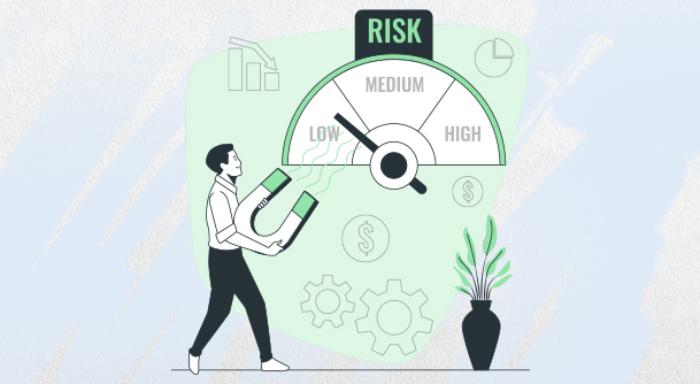Can You Exit Your ULIP Policy Before Maturity?
Blog Title
3759 |
11/7/24 4:30 AM |
"IN THIS POLICY, INVESTMENT RISK IN THE INVESTMENT PORTFOLIO IS BORNE BY THE POLICYHOLDER"
Unit-Linked Insurance Plans, or ULIPs in short, are life insurance products that combine the benefits of life cover and market-linked investment opportunity. This combination makes ULIPs an attractive choice if you want a life insurance plan that also offers returns. But not all ULIPs are the same!
Some plans only provide returns at maturity (end of policy), while other plans allow you to partially withdraw funds during the policy term itself. Another factor to consider before buying a ULIP is its exit terms and conditions. While the best course of action is to stay invested in your plan until maturity, circumstances out of your control may hinder your ability to pay premiums. Unexpected financial problems like medical emergencies or sudden home repairs can strike at any time. In such cases, you may consider exiting your plan to reassess your finances.
Here's a short guide on how you can surrender your ULIP, and the benefits you may receive upon surrender/termination of your policy-
ULIPs Have a Lock-In Period
The first thing you need to take into consideration is that all ULIPs have a ‘lock-in’ period. During this lock-in period, you cannot withdraw any money from your funds, even if your policy allows for partial withdrawals. The lock-in period for ULIPs is the first five policy years. However, this does not mean that you cannot surrender your policy during the lock-in period. But the benefits you get for surrendering your policy before the lock-in period ends will be different from the benefits you’ll get post the lock-in period.
Exiting a ULIP Before the Lock-In Period Ends
As per current regulations, you cannot completely exit a ULIP during the lock-in period. Even if you opt to surrender your policy, your funds will not be returned to you immediately. Instead, your policy benefits will end and the money you have invested will be transferred to the Discontinuance Policy Fund.
Here are the key details you need to know about the discontinued policy fund:
When you stop paying your premiums, a discontinuance charge will be deducted from your current fund value. This deducted fund value is then transferred to the discontinued policy fund.
The discontinued policy fund will grow at a guaranteed rate. This guaranteed rate will change as per IRDAI (Insurance Regulatory and Development Authority of India) mandate. Currently, the interest rate for discontinued policy fund is 4%.
You will not be able to withdraw the discontinued policy fund until the end of the 5-year lock-in period.
Once the 5-year lock-in period ends, you can withdraw the full amount in your discontinued policy fund, essentially surrendering your policy completely.
Exiting a ULIP After the Lock-In Period Ends
You can freely surrender your policy after the 5-year lock-in period ends. When you surrender your policy, a discontinuance charge will be deducted from your funds and the remaining amount will be paid out to you in full.
Stopping Premium Payments After Lock-In Period Ends
Sometimes you don’t want to completely surrender your policy. Maybe you’re just unable to pay your premiums due to some financial crisis, but still want to stay invested in your ULIP. In such cases, you can simply choose to discontinue your premium payments. When you stop premium payments during the lock-in period, your funds are converted into discontinued policy funds (as explained above). However, if you discontinue your payments post the lock-in period, your policy will instead turn into a Reduced Paid-Up Policy.
Here’s How a Reduced Paid-Up ULIP Works:
Your fund value will not be affected and will continue to grow/fluctuate as per market rates. However, you will not be able to directly add in money into your funds as you are no longer paying premiums.
The life cover element of your ULIP will be reduced. The reduction will be proportional to the amount of premium you have already paid for your policy. Refer to the formula below.
Paid-Up Sum Assured = Sum Assured x No. of premiums paid / No. of premiums payable
Any other optional benefit you have added to your plan will also be reduced proportionally to the premiums you have already paid.
Reviving Your Paid-Up/Discontinued Plan
If you opt to discontinue your premium payments instead of completely surrendering your plan, you may have the option to revive your policy. Once a policy is revived, you will have to start paying regular premiums again and your policy benefits will also be restored to their original state. The revival period for ULIPs is three years from the date of first unpaid premium.
To revive a discontinued/paid-up policy, you need to give a written application letter to your insurance company. You will also have to pay all your due premiums at once. Additionally, your insurance company may ask you to undergo a second medical examination to initiate policy revival.
Conclusion
The best course of recommended action is to not exit your ULIP before maturity. ULIPs are long-term investments that give better results the longer you stay invested. However, sometimes it can be difficult to maintain your regular payment schedule. If you are unable to continue with payments, consider converting your policy into a reduced paid-up instead of completely surrendering the policy. Surrendering your policy gives you an immediate payout but prevents your funds from growing further and realizing their full potential! Also, keep in mind that no ULIP can be surrendered before the 5-year lock-in period ends. Try to stay invested for the long run to get the best returns from your Unit-Linked Insurance Plan.
Aastha Mestry - Portfolio Manager
An Author and a Full-Time Portfolio Manager, Aastha has 6 years of experience working in the Insurance Industry with businesses globally. With a profound interest in traveling, Aastha also loves to blog in her free time.






